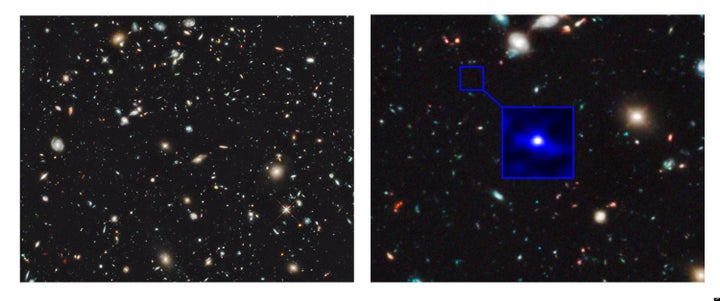
It's raining planets. Members of the science team for NASA's Kepler telescope have just announced the tentative discovery of more than 1,200 worlds orbiting distant stars. Of these, approximately four dozen are candidates for being Earth's doppelgangers -- planets that could be layered by a liquid ocean and a thick atmosphere. Worlds that might conceivably host life.
This is big news, and the search for radio transmissions from these latter worlds is already underway. Finding a signal would be shattering, for it would tell us that a planet is home to technologically savvy inhabitants.
Kepler's success has astronomers beating their pocket-protected chests, and it's hard not to be impressed by the numbers -- especially given a bit of historical perspective. For 200 millennia, our species knew of only seven bodies routinely shuffling through the star-filled skies: the Sun, moon, and five, bright, point-like objects with classy names from Roman mythology. Then in 1781, the English astronomer William Herschel saw a new world beyond Saturn. His discovery of Uranus hinted that more planets might be hiding in the dark, outer pickets of our solar system. (It also guaranteed job security for Herschel.) Within a century-and-a-half, Neptune and Pluto were uncovered.
And then the well went dry until 1995, when Swiss astronomers announced that a planet was racing around a rather ordinary star, 50 light-years distant. It was a world at least half the heft of Jupiter, and so close to its sun that daytime temperatures on the surface would be several thousand degrees. A world as sterile as a baked brick.
In the years since, teams of astronomers have used large, ground-based telescopes to laboriously track down more planets. Meticulous work, but it's paid off. The current tally is more than 500 extrasolar planets, or a discovery rate of nearly one a week. That is, until Kepler's big announcement.
This plucky NASA telescope is able to find planets en masse. If you compare planet hunting to prospecting for gold, then Kepler is equivalent to trading in your trusty pan for a diesel-powered sluice box.
But aside from Kepler's wholesale approach to uncovering new worlds, it has a talent that the traditional methods don't yet have; namely the ability to find small planets that aren't too close to their suns. Planets that are the size of Earth (or even Mars) -- and in orbits that might allow them to enjoy temperatures befitting biology-as-we-know-it.
So Kepler's discovery of worlds that could support life is an obvious motivation for the SETI Institute to swing the antennas of the Allen Telescope Array in their direction. So far, a preliminary reconnaissance has combed these worlds for signals over one small slice of the radio dial. No clearly extraterrestrial transmissions have been found.
But here's the promise. If we crudely do the numbers, these early results from Kepler indicate that approximately 3 percent of all stars could boast a habitable planet. Within a thousand light-years of Earth -- a distance that could be bridged by transmitters no more powerful than equipment we ourselves can build -- there are at least 30,000 of these habitable worlds.
Well, perhaps they're only habitable, and not inhabited. Conceivably, they could all be barren. Or perhaps they host only intellectually challenged life -- alien equivalents of paramecia, pond scum, or pterodactyls.
Maybe. But it's hard to argue against making a bet and tuning the telescopes. Kepler's search is still underway. More Earth-like planets will come down the pike in the next two years, and you can bet your paycheck they'll be getting increased scrutiny for the tell-tale signs of intelligence.
Sure, nothing has been found so far. But 30,000 is a big number.